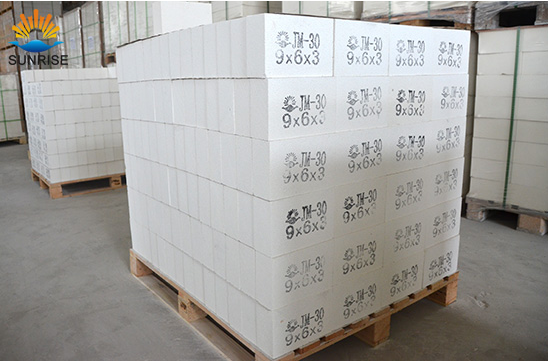Product Search
Quickly find the product you need
Products List
Refractory Knowledge
- Aggregates Used For the Production of Ins
- the development of the refractory brick i
- Pros and cons of lightweight mullite bric
- Manufacturing process of fire clay insula
- Refractory material production process
- The Use of Mullite Insulation Bricks
- Classification of mullite insulation bric
- Production Process Methods of Refractory
- Pollution and treatment in the production
- Thermal Shock Resistant Fireproof Heat In
Products List
- Phone:0086-370-63838939
- Email:sales@sunriserefr.com
- Office Address: No.36 Fengchan Road Of Zhengzhou, Henan, China (Mainland)
The Using Nature of Refractory Materials
Date:2016-11-24 16:53 | From:Zhengzhou Sunrise Refractory | Author:admin
In use process of refractory material, due to a variety of differences of environment, a variety of requirements are proposed on the performance of products, whether to meet the requirements of
performance indicators, become the main measure standard of the quality of refractory products, and also prolong its service life, improve the important basis of use value.
Refractoriness
Refractoriness is refractory material resist to high temperature function rather than melting performance, its meaning of refractoriness and melting point are different, melting point is refers to the
crystalline phase and liquid phase of pure substance is in equilibrium temperature. And general refractory material is multiphase solid mixture composed of a variety of mineral, has no uniform
melting point, but began to produce liquid phase under certain temperature, with temperature rising, the liquid phase ratio increases continuously, to a fixed temperature, solid phase can all melt
for the liquid phase. Between the two fixed temperature range, both liquid phase and solid phase exist at the same time.
The chemical composition, mineral composition and its distribution of refractory products are the most basic factors to influence the refractoriness. Impurity elements with strong solvent effect, will
seriously reduce the refractoriness of products. Uneven distribution of composition that cannot form an ideal high melting point mineral, will lead to lower refractoriness products, so damage the
using performance of products, but the refractoriness of products doesn't mean its use temperature, because refractory material in use, processes through high temperature function at the same
time, often with the solvent effect of load and external things and so on. Actually allowable working temperature is much lower than refractoriness, but, after all, the refractoriness index is one of the
important reference frame to select reasonably refractory material.

Refractoriness under load
The refractoriness under load of refractory material, also known as the high temperature load deformation temperature, defined as refractory products under persistent overheating conditions,
bear deformation temperature under constant load. It said the refractory products at the same time resist the ability of high temperature and load effect.
Linear change on reheating
Linear change on reheating, also known as residual linear change, refers to after the refractory material heated to high temperature, happens the irreversible changes of its length. The specific
definition is refractory products sample heated to the specified temperature, heat preservation time, after cooling to room temperature, the length produce residual expansion or contraction.
Thermal shock resistance
Refractory material in use process, the environment temperature change is inevitable. Sometimes it is even very sharp change, for example, in metallurgical operation, the brick, flat, furnace
charging, heating up, the furnace temperature in the steel, etc.
performance indicators, become the main measure standard of the quality of refractory products, and also prolong its service life, improve the important basis of use value.
Refractoriness
Refractoriness is refractory material resist to high temperature function rather than melting performance, its meaning of refractoriness and melting point are different, melting point is refers to the
crystalline phase and liquid phase of pure substance is in equilibrium temperature. And general refractory material is multiphase solid mixture composed of a variety of mineral, has no uniform
melting point, but began to produce liquid phase under certain temperature, with temperature rising, the liquid phase ratio increases continuously, to a fixed temperature, solid phase can all melt
for the liquid phase. Between the two fixed temperature range, both liquid phase and solid phase exist at the same time.
The chemical composition, mineral composition and its distribution of refractory products are the most basic factors to influence the refractoriness. Impurity elements with strong solvent effect, will
seriously reduce the refractoriness of products. Uneven distribution of composition that cannot form an ideal high melting point mineral, will lead to lower refractoriness products, so damage the
using performance of products, but the refractoriness of products doesn't mean its use temperature, because refractory material in use, processes through high temperature function at the same
time, often with the solvent effect of load and external things and so on. Actually allowable working temperature is much lower than refractoriness, but, after all, the refractoriness index is one of the
important reference frame to select reasonably refractory material.

Refractoriness under load
The refractoriness under load of refractory material, also known as the high temperature load deformation temperature, defined as refractory products under persistent overheating conditions,
bear deformation temperature under constant load. It said the refractory products at the same time resist the ability of high temperature and load effect.
Linear change on reheating
Linear change on reheating, also known as residual linear change, refers to after the refractory material heated to high temperature, happens the irreversible changes of its length. The specific
definition is refractory products sample heated to the specified temperature, heat preservation time, after cooling to room temperature, the length produce residual expansion or contraction.
Thermal shock resistance
Refractory material in use process, the environment temperature change is inevitable. Sometimes it is even very sharp change, for example, in metallurgical operation, the brick, flat, furnace
charging, heating up, the furnace temperature in the steel, etc.

